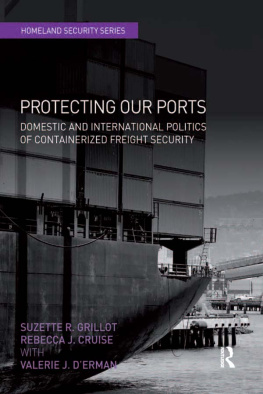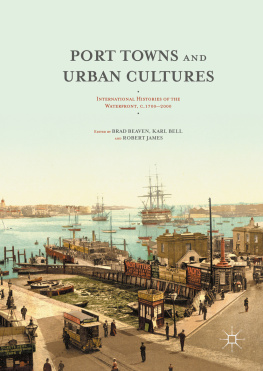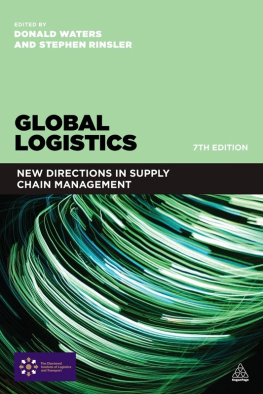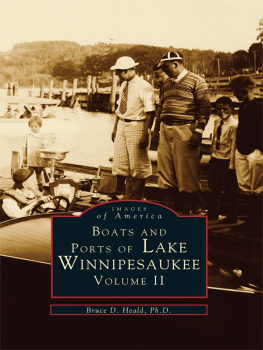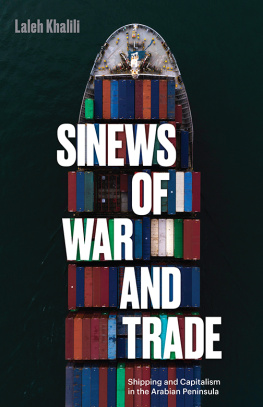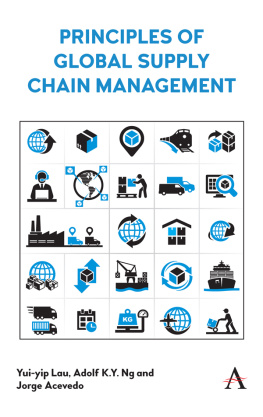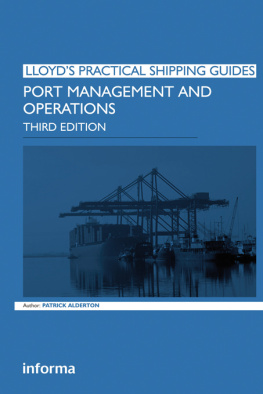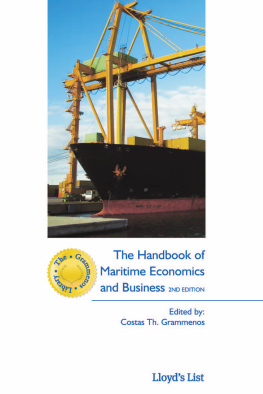Contents
Guide

Jrgen Sorgenfrei
Port Business
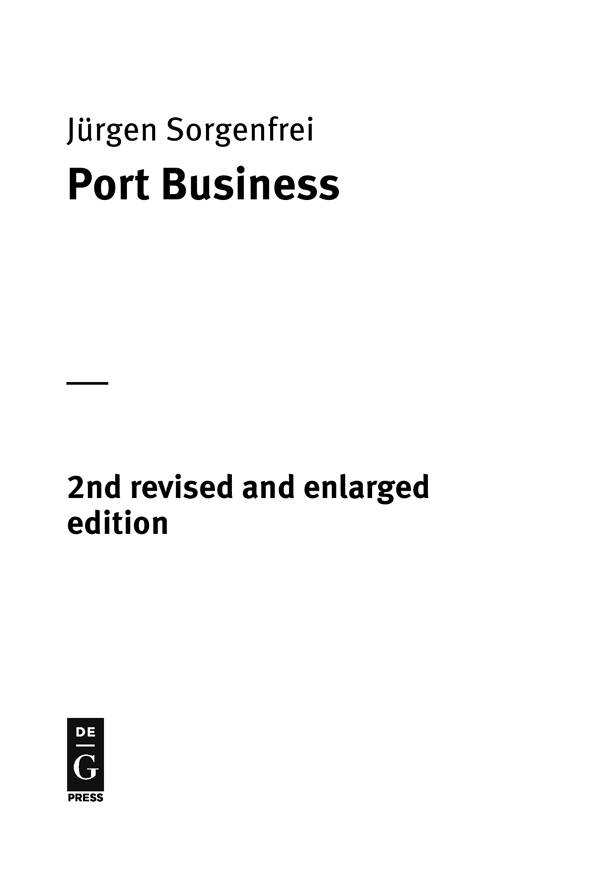
ISBN 978-1-5474-1702-5
e-ISBN (PDF) 978-1-5474-0087-4
e-ISBN (EPUB) 978-1-5474-0089-8
Library of Congress Control Number: 2018949268
Bibliographic information published by the Deutsche Nationalbibliothek
The Deutsche Nationalbibliothek lists this publication in the Deutsche Nationalbibliografie; detailed bibliographic data are available on the Internet at http://dnb.dnb.de.
2018 Jrgen Sorgenfrei
Published by Walter de Gruyter Inc., Boston/Berlin
www.degruyter.com

for:
Anke
Alex
Gigi
About De|G PRESS
Five Stars as a Rule
De|G PRESS, the startup born out of one of the worlds most venerable publishers, De Gruyter, promises to bring you an unbiased, valuable, and meticulously edited work on important topics in the fields of business, information technology, computing, engineering, and mathematics. By selecting the finest authors to present, without bias, information necessary for their chosen topic for professionals , in the depth you would hope for, we wish to satisfy your needs and earn our five-star ranking.
In keeping with these principles, the books you read from De|G PRESS will be practical, efficient and, if we have done our job right, yield many returns on their price.
We invite businesses to order our books in bulk in print or electronic form as a best solution to meeting the learning needs of your organization, or parts of your organization, in a most cost-effective manner.
There is no better way to learn about a subject in depth than from a book that is efficient, clear, well organized, and information rich. A great book can provide life-changing knowledge. We hope that with De|G PRESS books you will find that to be the case.
Preface to the Second Edition
Five years ago, when the first edition of this book was published, there was widely accepted confidence in the maritime markets that in 2015, or 2016 at the latest, the global conditions for ports and shipping would be back to normal. This meant: back to the situation before the Financial Crisis, and all the problems in its aftermath. But this did not happen! Ten years later the maritime industry, and so ports, still suffer. All types of ports were directly or indirectly affected.
According to the International Chamber of Shipping around 90% of world trade is maritime trade, and ports are the gateways to the markets for the shipping industry. Everyone who eats Argentinian meat, uses an Asian manufactured mobile phone or laptop, who drives a European car or wears clothes made in South Asia indirectly participates in the advantages the efficient maritime supply chains offer. However, despite the huge economic importance, the economic framework for the maritime industry and so for the commercial ports around the world is still challenging. There have been periods of favorable market performance over the past decade for shipping, but they led to an overbuilding of new vessels, and these ships needed to be employed. The result for some ports was a gain of new services, while others lost the calls. Rate collapses followed vessel oversupply, and the pressure on all partners along the supply chain deteriorated. Nevertheless, the pressure to invest in new equipment in order to serve the vessels and to create a wider network of potential ports of call was still there.
In the past, ports often were considered as gateways to the world, growth poles, job-machines, tax generators, facilitators of trade, but the positive image has been tarnished. At the same time multiple new mega trends evolved. For instance, the Chinese government announced the huge trade and transport initiative OBOR One Belt, One Road. The melting ice in the Arctic already today offers new alternatives for East AsiaEurope trade, with the consequence of new routes. A series of international regulations will kick in, and the maritime industry will need to follow several new emission rules set by the International Maritime Organization, and ports will need to collect the waste. On shore power supply for vessels becomes an increasingly important topic, but as there is no standard, ports are confronted with multiple technical solutions. New emission rules will lead to revised bunker activities very soon, and ports are requested to provide the necessary infrastructure. Big ships like the 20,000+ TEU container vessel offer economy of scale savings for the ship owners, and ports need to invest in bigger cranes, larger terminals and deeper water or miss participating in the efficiency increase. The need for attractive inner-city residential areas squeezes especially old ports to vacate their attractive locations and to find new areas for their business.
concentrates on the supply chain view and provides trade and transportation background information, explaining the role ports play along the transportation chain and focuses finally on the cargos that are transported and the problems that may occur in cargo measurement.
with a discussion of mega trends that already or may in future impact ports and terminals.
As the title Port Business indicates, this book is written for everybody with interests in trade and transportation and the role ports play in the global supply chain. It shall explain what ports are, which role they can play and what the restrictions are, how they are managed, what drives the business and which trends influence them.
Preface
The world economy has globalized at a tremendous pace over the past 30 years, exporting over a quarter of its merchandise output in 2010, up from 17% in 1980. Economies have become more interdependent and the digital revolution has brought buyers and sellers from around the globe closer together. While some 16% of world trade passes overland, 6.7% through pipelines, and 0.3 via air, it is estimated that world seaborne trade by volume amounts to 77% of total world trade. In 2010, this meant a total of 7.9 bn tonnes were transported by sea in the world. With the globalization of the world economy, a nations economic competitiveness is linked increasingly to its ability to ship raw materials, intermediate goods, and final products efficiently and economically, and to receive these goods in productive, efficient and cost-effective ports. Excessive port costs on the other hand, or delays, can prompt investors to locate new production facilities in other countries or regions. Ports failing to adapt these trends and falling back in modernization could be left behind.
Throughout history, port locations have been selected to optimize access to land and navigable water, for commercial or military demand, and for shelter from wind and waves. Ports handled every kind of traffic and every kind of cargo, provided all kinds of logistics services, and have been an inherent part of historic city life. Today, in times of raising vessel sizes, ports struggle with deeper water and the pressure to be more efficient at lower costs. Medium-sized ports face new pressures of specialization and targeting selected market niches, while the very few so-called Mega-Ports have to offer the whole range of activities, yet remain specialists for all kinds of goods that are traded around the world.
Commercial databases list more than 11,000 commercial ports and terminals around the world, and port business increases in complexity every year. It is the intention of this book to put the port business into the right perspective and provide insight. For this purpose, the first part looks back into the history of ports then provides a status quo of ports today. Part two concentrates on the supply chain view and provides trade and transportation background information, explaining the role ports play along the transportation chain and focusing finally on the cargoes that are transported and the problems that may occur in cargo measurement.



